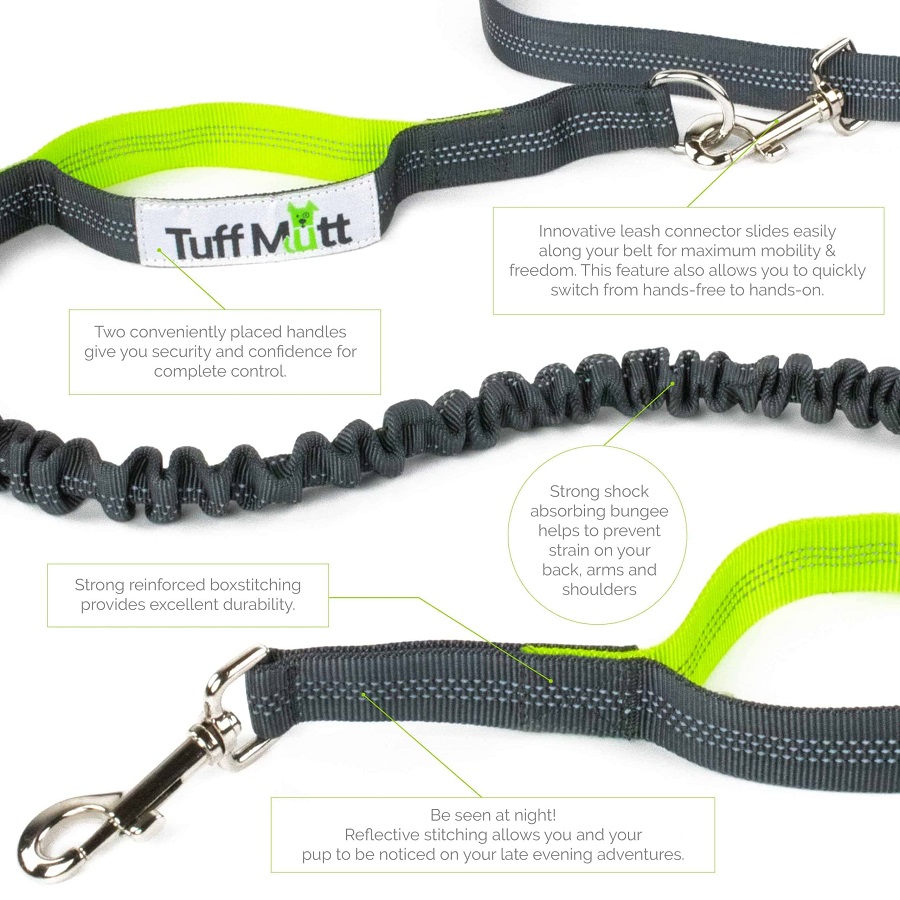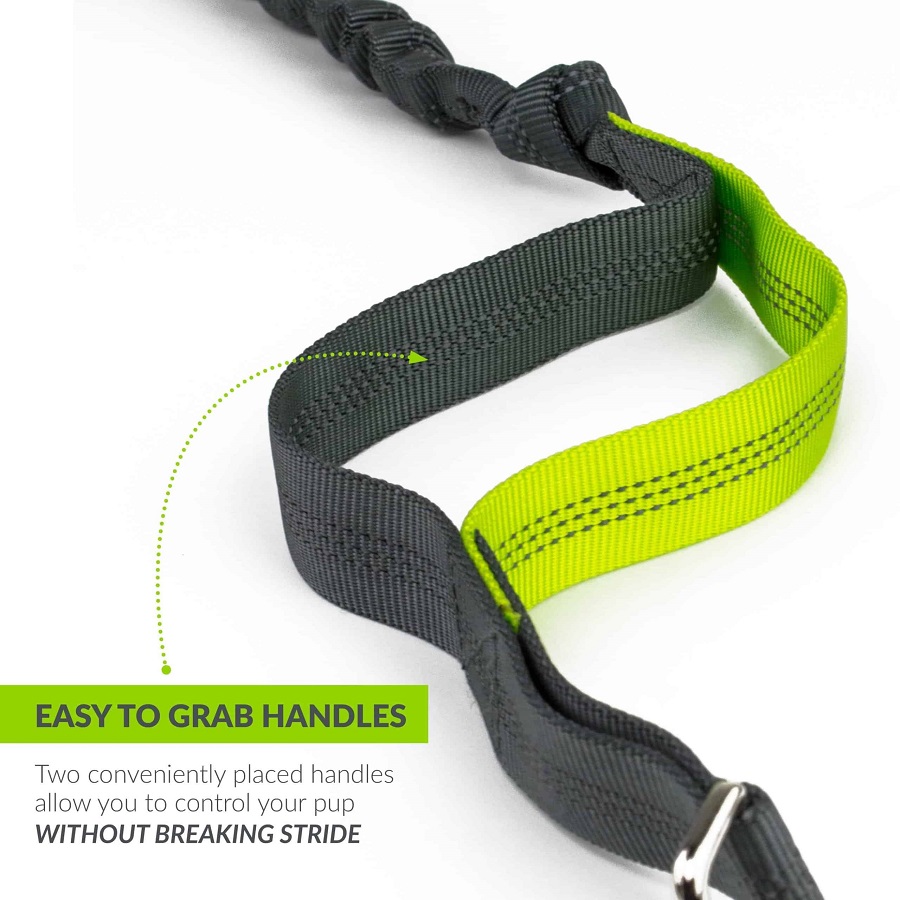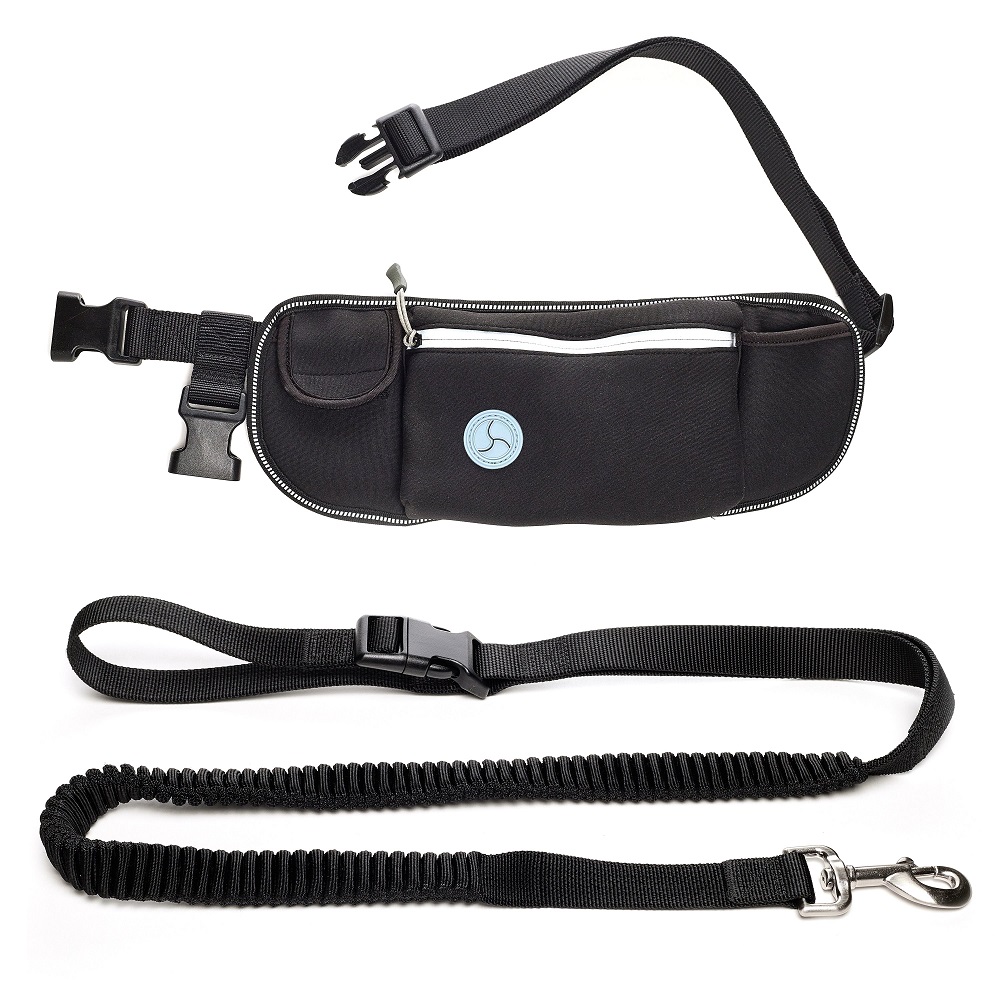Hands-free leashes are becoming an increasingly popular choice for dog owners looking for more freedom during walks or runs. These innovative leashes allow you to keep your hands free while maintaining control over your dog, which can be a great convenience for active individuals. However, as with any new product, it’s important to consider both the benefits and potential risks before deciding whether a hands-free leash is right for you and your dog. In this guide, we’ll explore the safety of hands-free leashes, the factors you should consider before using one, and how to use them properly to ensure the well-being of both you and your furry companion.
What Is a Hands-Free Leash?
Understanding the Concept of a Hands-Free Leash
A hands-free leash is a type of dog leash that attaches to your body, typically around the waist, chest, or shoulders, allowing you to walk, run, or bike while keeping both hands free. Unlike traditional leashes, which you hold in your hand, hands-free leashes design to distribute the pressure of the leash across your body. These leashes usually come with adjustable straps, shock-absorbing features, and quick-release mechanisms, all of which intend to make your experience more comfortable and convenient.
Hands-free leashes are commonly used by dog owners who engage in activities such as running, hiking, or biking. They are particularly beneficial for people who want to enjoy outdoor activities with their dog without being restricted by holding a leash. They allow for more natural movement, enabling owners to maintain a steady pace, stay balanced, and have better control over their dog during physical activities.
The design of hands-free leashes varies, but most models include an adjustable waistband or harness that fits securely around the owner’s body. The leash itself is typically attached via a clip or carabiner, and the leash may also feature additional components like reflective strips for safety, a bungee cord for shock absorption, or extra padding for comfort.

The Benefits of Using a Hands-Free Leash
Greater Freedom and Flexibility During Activities
One of the main advantages of using a hands-free leash is the increased freedom it offers. Traditional leashes can limit your ability to fully engage in activities like running or biking, especially if you’re trying to keep your dog under control. Holding a leash while performing these activities can also be cumbersome and uncomfortable. With a hands-free leash, however, you can move freely and maintain a better posture without the need to clutch a leash in your hand.
For runners, bikers, or hikers, a hands-free leash allows you to keep a steady pace without needing to slow down or adjust your grip on a leash. It helps maintain a natural stride and can make outdoor activities more enjoyable and less restrictive. For instance, when running, you won’t have to worry about the leash dragging on the ground or bouncing around as you move. The leash stays attached securely to your waist, and the dog guide along at your pace.
Additionally, hands-free leashes can help you multitask while walking or jogging. For example, you can use your hands to carry a water bottle, a phone, or even exercise equipment while still maintaining control over your dog. This is a significant advantage for pet owners who want to be more efficient with their time and activities.
Reduced Strain on Your Hands, Wrists, and Arms
Another benefit of a hands-free leash is the reduction in physical strain it offers. Traditional dog leashes require constant grip and wrist movement, which can lead to discomfort, fatigue, or even injury if used for prolonged periods. For dog owners with joint issues, arthritis, or other physical limitations, using a hands-free leash can provide relief by transferring the tension to your body rather than your arms and wrists.
By distributing the force more evenly across your torso or waist, the hands-free leash reduces the risk of repetitive strain injuries that often come with holding a regular leash for long walks or runs. This is especially important for people who take their dogs on frequent outings or who enjoy activities like running or hiking with their pets. Using a hands-free leash can make these activities more comfortable and less taxing on the body, encouraging pet owners to stay active and engaged with their dogs.
Are Hands-Free Leashes Safe for You and Your Dog?
Considering Safety Concerns for You and Your Dog
While hands-free leashes offer several advantages, they also come with certain safety concerns that both dog owners and dogs should be aware of. First, one of the primary risks associated with hands-free leashes is the potential for losing control of the dog, especially in situations where the dog pulls suddenly or encounters distractions such as other animals, pedestrians, or vehicles. Unlike traditional leashes, which can adjust or tightened quickly with your hand, hands-free leashes require you to rely on the leash’s tension and its attachment to your body.
If the dog pulls too hard or behaves unpredictably, it may result in a sudden jerking motion that can cause discomfort, injury, or even cause you to lose your balance. In some cases, this could be especially dangerous when running or biking at higher speeds. As the leash is connected to your body, there is less room for you to react quickly in such situations, which may lead to accidents or falls.
Another potential issue is that hands-free leashes can be more difficult to control in crowded or unpredictable environments. For instance, if your dog is reactive to other dogs, or if you’re walking in a busy area, a hands-free leash may not provide the level of immediate control needed to prevent a sudden outburst. In such cases, it might be safer to use a traditional leash where you have more immediate control over your dog’s movements.
Choosing the Right Hands-Free Leash
To ensure that both you and your dog are safe when using a hands-free leash, it’s important to choose the right type of leash and fit. Many hands-free leashes come with adjustable straps and quick-release mechanisms that allow you to quickly detach the leash from your body if needed. It’s crucial to select a leash with these safety features, especially if your dog tends to pull or has an unpredictable temperament.
Additionally, consider the strength and size of your dog. Hands-free leashes are ideal for medium to large dogs, but they may not be suitable for dogs that are particularly strong or aggressive. For smaller or less active dogs, a regular leash may provide more control, while larger dogs may require additional reinforcement to prevent any mishaps during walks or runs.
When selecting a hands-free leash, it’s essential to check the material and durability of the leash itself. Look for leashes that are made from strong, durable materials like nylon or leather, as these will offer greater security. Also, check for features like a bungee cord for shock absorption, which can help reduce the impact on your body when your dog suddenly pulls or jerks.

How to Use a Hands-Free Leash Safely
Training Your Dog to Use a Hands-Free Leash
Before using a hands-free leash in real-world scenarios, it’s important to train your dog to get used to the concept of being attached to you via a leash. Start by introducing the hands-free leash during your normal walks and gradually increase the level of activity. This allows your dog to acclimate to the sensation of the leash while you’re still in control with a traditional leash.
For dogs that not use to walking on a leash, or for those who tend to pull, it’s best to start with basic leash training before switching to a hands-free leash. Use positive reinforcement techniques to encourage calm behavior, and reward your dog for walking at a consistent pace without pulling. Training sessions should be short and positive, gradually increasing in difficulty as your dog becomes more accustomed to walking with the hands-free setup.
Once your dog is comfortable with regular walks and leash training, you can move on to more active scenarios like running or hiking. Remember that using a hands-free leash during these activities can require a higher level of control, so be sure to assess your dog’s behavior and whether the activity is appropriate for their energy levels.

Starting Slow: Avoiding Overexertion
When first using a hands-free leash, it’s important to start slow and gradually build up to longer or more intense physical activities. Even if your dog is fit and active, sudden changes in pace or distance can lead to strain or injury. Begin with short runs or hikes and monitor your dog’s behavior, looking for signs of fatigue or overexertion. Always give your dog plenty of breaks, especially during warm weather, to prevent heat exhaustion or dehydration.
Additionally, if you’re running with your dog, be mindful of the terrain and environment. Hands-free leashes best use on flat, safe surfaces, such as sidewalks or park trails. Avoid busy roads, crowded areas, or unpredictable environments, as these situations may increase the risk of accidents or mishaps. Always keep a close eye on your dog’s behavior and adjust your pace accordingly.










